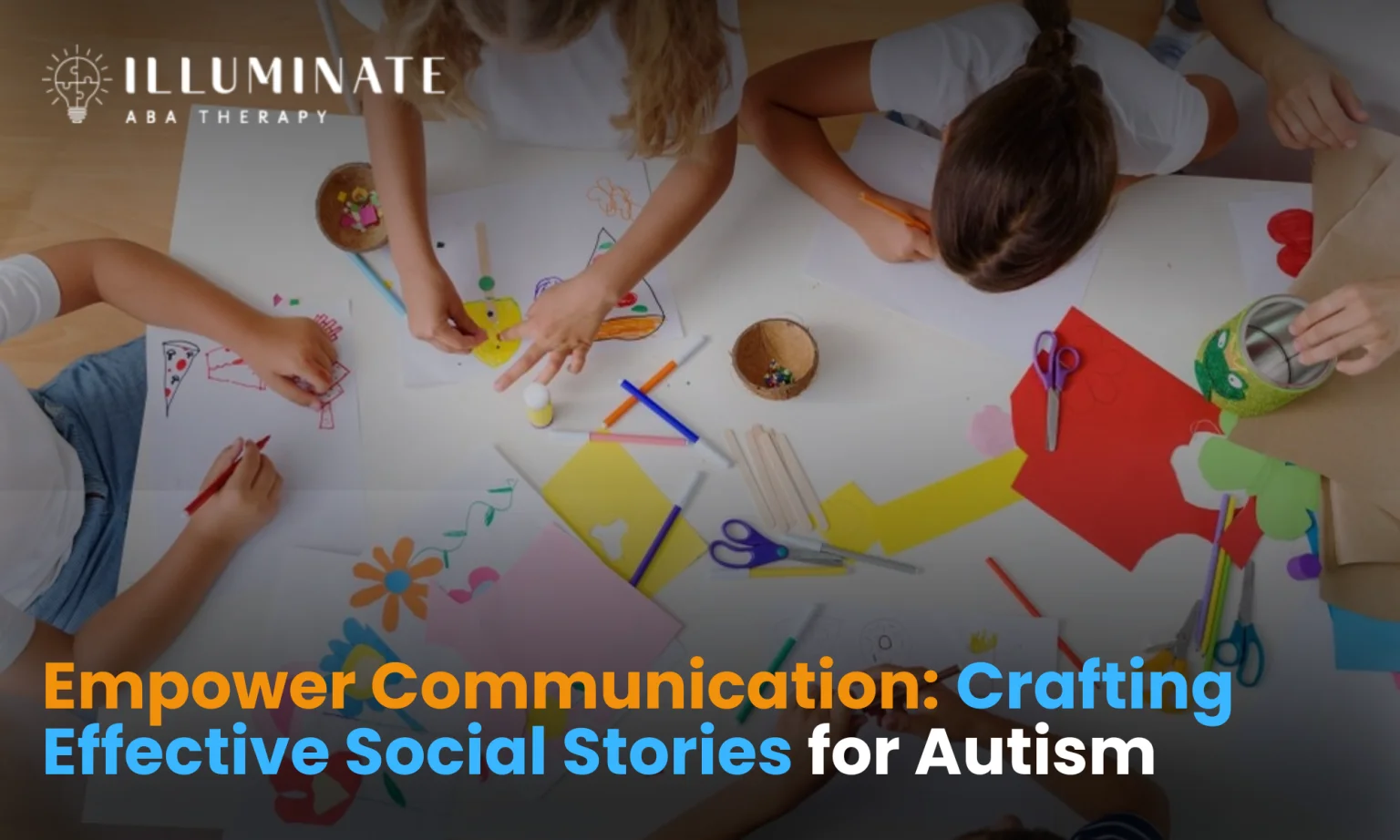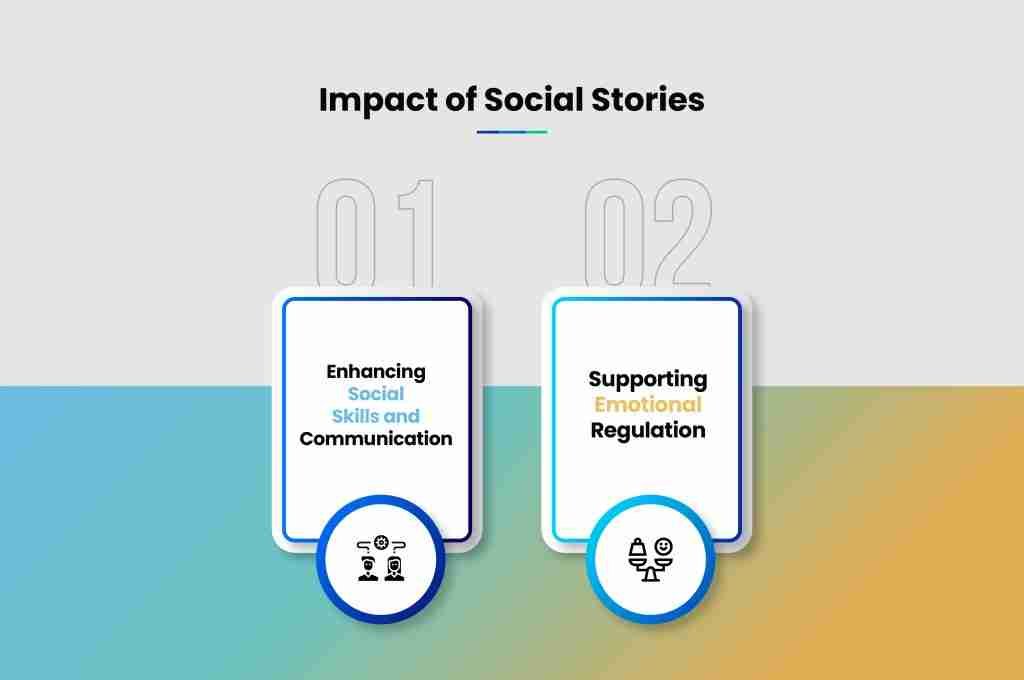Empower Communication: Crafting Effective Social Stories for Autism
ABA TherapyJuly 17, 2025

Understanding Social Stories
When it comes to helping folks with autism get the hang of socializing, something called "social stories" often works wonders. Cooked up by Carol Gray back in the 1990s, these storytelling methods have been front and center in helping people with Autism Spectrum Disorder (ASD) understand the world around them. Social stories use simple narratives and sometimes pictures, acting like a friendly guide for those trying to figure out social dynamics.
Introduction to Social Stories
So, what's the deal with social stories? Think of them as short, easy-to-understand tales that break down social situations into bite-sized pieces. They're designed to help individuals with autism get a handle on how to react and feel comfortable in different social settings. By turning confusing or stressful situations into a story format, these tools cut down on anxiety and boost communication and social understanding.
Benefits of Social Stories
Now, let's chat about why social stories are a game-changer. They do a lot more than just explain stuff; they're like a Swiss Army knife for autism intervention. Here's what they tackle:
- Improved understanding and social awareness, as noted by Magnet ABA.
- Lower anxiety during social situations—it’s like having a cheat sheet for social rules.
- Better communication skills, helping create back-and-forth interactions.
Social stories turn what might feel like a complicated mess of social cues into something manageable and clear. With their structured approach and sometimes a visual kick, they give individuals the tools to make headway in social scenarios, pick up on the right behaviors, and form meaningful relationships. It’s all about making socializing less of a mystery and more of an adventure.
Creating Effective Social Stories
When creating social stories for kids with autism, it's all about getting into their world and figuring out what works for them. These aren't just bedtime stories; they're meant to help kids navigate and get comfortable with different situations. Word choice and visuals can make a big difference.
Personalization and Individual Needs
Everyone's unique, right? And while we all need a different approach, it's especially true for kids with autism. Their stories need to speak directly to them. Think of it like pizza toppings—some may love pepperoni while others crave mushrooms; it's all about what makes sense to them. According to Magnet ABA, hitting the right note involves focusing on one thing at a time, like brushing teeth or saying hello. And make sure the characters and scenes make sense in their lives, promoting the good stuff like sharing and patience. Tuning into specific challenges they face helps them connect and grow.
Age-Appropriate Language and Visual Supports
Knowing how to talk to kids at their level is huge! Think of the National Autistic Society as a wise aunt giving you solid advice about keeping things simple and supportive. Their guide suggests using words and pictures that fit a child's hobbies and understanding. This method makes everything clearer and helps guide them in the right direction.
Visuals are another awesome tool. Kids often get more out of stories that come with pictures, symbols, or drawings. For someone who might not pick up on all the words, images can fill in the gaps, making the narrative more vivid. Visual aids allow kids to grasp what's being explained better and help develop essential social skills.
Put it all together: personal storytelling, simple language, and visual aids. These can create powerful lessons that resonate deeply with kids, offering not just knowledge but a better pathway to communication and understanding. Every piece melds together to make these stories practical and powerful in fostering those essential life skills.
Implementing Social Stories
Using social stories in schools, especially for kids with autism, is a powerful tool. They're often part of Individualized Education Plans (IEPs), crafted with care to fit each student like a glove. Teachers and special ed experts huddle together to whip up these stories, zeroing in on the unique hurdles and goals each student faces.
In Schools and Individualized Education Plans (IEP)
Social stories are like little guiding lights in a classroom that accommodate students with autism. They snugly fit within IEPs, becoming handy tools that help students get their bearings during social interactions and tackle various scenarios head-on.
These stories aren't just any tales; they're crafted to tick all the boxes each child needs—showing what happens in certain situations and how to handle them right. By weaving social stories into IEPs, educators aim to sharpen social skills, encourage good vibes, and build a positive space for learning.
Collaboration in Story Creation
Making social stories work is a team sport. Teachers, parents, therapists, and other pros team up to brainstorm and brew stories that truly connect with each child's needs.
This teamwork breeds stories that click with kids, making them relevant and engaging. By mixing minds and sharing insights, stories can be loaded with strategies that suit different kinds of learning.
Through this synergy, there's a dynamic network supporting the child, diving deep into understanding what they need, and whipping up social stories that pack a punch.
When schools embrace social stories and teamwork in stitching them up, they're setting the stage for students with autism to blossom in communication and social arenas. There’s plenty of promise in using these stories to create a chill and inclusive classroom scene, smooth out social interactions, and manage behaviors effectively among students with autism.
Impact of Social Stories

Social stories are like little guides packed with superpowers, helping kids with autism shine in social settings. These tales, thanks to Carol Gray’s brainy work, have become a trusted friend for many families and educators, simplifying the complex world of social interaction and communication for children with autism (Magnet ABA).
Enhancing Social Skills and Communication
Think of social stories as mini-movies, but instead of screens, they are played out with words and pictures (Gold Star Rehab). They're all about helping kids navigate tricky social landscapes. Whether it’s saying "hello," sharing a toy, or managing big feelings, these stories break down the complexity into bite-sized, easy-to-digest chunks. They offer a dependable game plan that helps kids know just what to do or say.
When used consistently, social stories help kids understand the ins-and-outs of the world around them, making it easier for them to learn everyday tasks and decode other people's actions (Autism Parenting Magazine). It's like equipping them with tools to tackle the day's events, no matter what they might face.
Supporting Emotional Regulation
Social stories aren't just for learning how to say "please" or "thank you." They're also fantastic at soothing emotional turbulence. When kids face stress or unexpected changes, these stories offer blueprints for how to stay calm, adjust, and cope (Gold Star Rehab). Whether it's dealing with a surprise school assembly or understanding how to stop hitting, these stories set the groundwork for kids to manage themselves better.
Beyond teaching behavior, social stories are like personal cheerleaders—they reinforce good strategies and help kids build resilience. They create a sense of familiarity and routine that makes dealing with reality just a little less daunting (National Autistic Society).
So, what's the big takeaway? Social stories are more than educational—they're transformational. They don’t just teach children with autism how to act in social settings or handle their feelings—they help build a foundation for improved emotional health and social success. Families, teachers, and therapists who weave social stories into everyday learning create a richer, more supportive environment, paving the way for children to thrive every day.
Learn More About: Unlocking Behavior Change: Power of ABA Behavior Contracts
